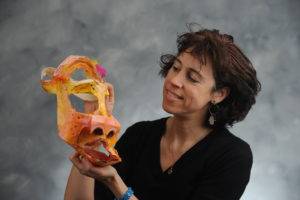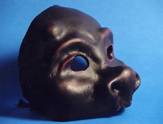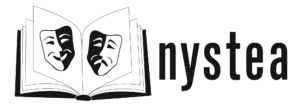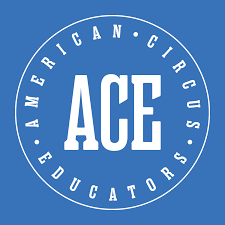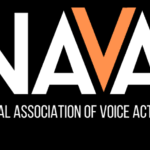I have given many mask-making workshops, with the adult cast of a show, for toddlers, in school settings, with tweens who have disabilities, and as part of a physical theatre performance at a museum. Each time, the group members have been surprised by the newness of it, then cautious and worried about getting it right as they begin, then delighted and enthusiastic as the masks come into being in their hands. Too often, I think, such exploration of an alien landscape is relegated to an art class when its power and wonder would blossom in sooo many other circumstances. I hope this article encourages you to take on a mask-making moment with your community, classroom, eldercare folks, children, women’s group — all of it!
What are the best mask-making materials?
I have made masks out of many materials and using a variety of techniques, from traditional (wood, leather, fabric, papier mache, feathers, etc) to 20th century (latex, neoprine/acetate) to my current favorites that others are now also choosing: medical plastic (aquaplast) and, believe it or not, manila folders. The Fox and the goofy pink/orange mask are examples of manila-folder masks, and I have made masks of horses and dragons that are almost three feet in length, but still light and strong. I am mad-CRAZY in love with this material!
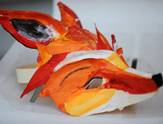
I am deeply committed to manila-folder mask-making and spreading the love and use of this amazing material, because:
- It is so low cost (used folders are fine, and new ones can be had very very cheaply) that almost any schools and arts programs can use them.
- There is no need for water, so no logistical issue there, and can be used in water rationed areas.
- The materials and by-products are all non-toxic and recyclable or compostable.
- It’s sooooooo easy to clean up.
- Making masks like this involves creative problem-solving, geometric/architectural thinking, and artistic process!
This begs the question, why?
Why do people make masks?
Balinese people say that a good mask has “taksu,” meaning it is a “spirit house.” I think that’s why people are drawn to masks — they seem to have a life of their own, their own passions, movements, intents, and personalities. The better the mask, the more intensely we are excited, nervous, frightened, or intrigued by them and by the idea of wearing them.
The process of making masks can be:
- Therapeutic
- A means to connect more deeply to a cultural idea or animal legend (especially in an Elementary School Social studies or Language Arts curriculum)
- A successful modality of expression for folks with language or writing challenges
- WAY FUN
Why do we wear masks?
To conceal identity, but also to reveal an identity, taking on specific characteristics and implications. For example, the Lone Ranger and Zorro both wore simple black masks. Simplicity of action and intent is part of what is implied by the mask, and the color and lack of distinguishing features implies something too. If you look at pictures of these two iconic masks, they might invoke a feeling of strength.
We also do it to play a specific, sharply defined character or one markedly different from oneself (as in Halloween masks and Commedia dell ‘Arte masks), to play a part largely enough to be seen from farther away, and to become a character beyond human experience — gods, animals, trees, legendary creatures, even personified ideas. A mask also frees the self by demanding a higher level of commitment than other kinds of performing — the character of the mask is not only more sharply defined, but also more powerful, as the intents and emotions are amplified. Who the performer is becomes irrelevant — men, women, children of any ethnicity, language, and physical ability can become the character. It’s sort of the opposite of being a movie star, because the character has more importance than the performer, and different people can play the same part. How awesome is that?
There are more reasons, of course, but these are the main ones, and the ones that drew me to masked performing while growing up. I was deeply, almost pathologically shy as a child, constantly afraid of taking the wrong action, saying the wrong thing. Becoming an actor helped enormously, but exhilarating freedom came from discovering, listening to, and embodying a mask’s clear demands.
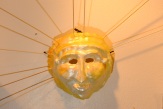
The Arts and Arts Education are for everyone. I hope the spirits of these masks intrigue you enough to suggest a mask performance at a local school or a mask-making project as part of a social-studies unit or elder-care facility, or for yourself to take a secret afternoon and call forth a creature from your dreams, bringing it to life with the materials in your hands.
